15 Old Town Squares That Define Their Cities
Old town squares have long been the gathering places where history, culture, and daily life come together. These spaces often feature striking architecture, bustling markets, and monuments that tell the story of the city around them. Visitors and locals alike are drawn to their open charm, whether for celebrations, quiet strolls, or community events. Each square carries the character of its city, offering a glimpse into its past while remaining alive with present activity.
This post may contain affiliate links, which helps keep this content free. Please read our disclosure for more info.
Old Town Square, Prague
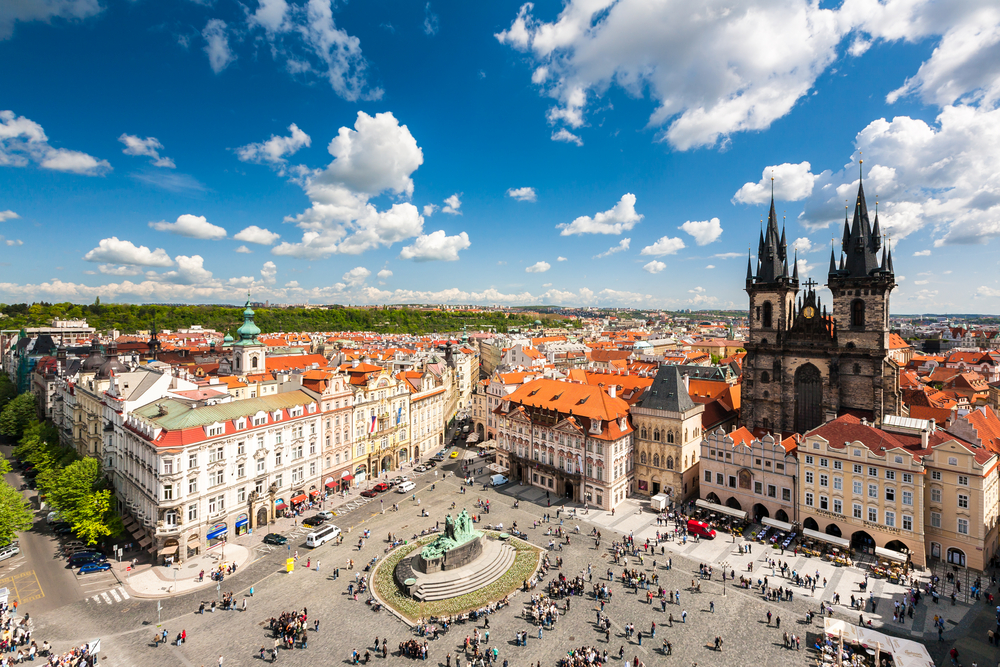
Old Town Square in Prague is more than a central plaza; it is a living reflection of the city’s layered history. Surrounded by Gothic spires, pastel-colored Renaissance buildings, and Baroque facades, the square brings together different centuries in one open space. The Astronomical Clock, with its hourly procession of figures, has fascinated crowds for over 600 years and remains one of the most treasured landmarks. The square also hosts statues and churches that embody both religious devotion and civic pride.
For centuries, it has been the stage for royal ceremonies, political gatherings, and public markets. Merchants once set up stalls here, selling everything from local produce to luxury imports from across Europe. Today, it still serves as a gathering place, where festivals, concerts, and holiday markets bring the square to life. Its enduring role as a crossroads of culture and community makes it the heart of Prague’s identity.
Piazza San Marco, Venice
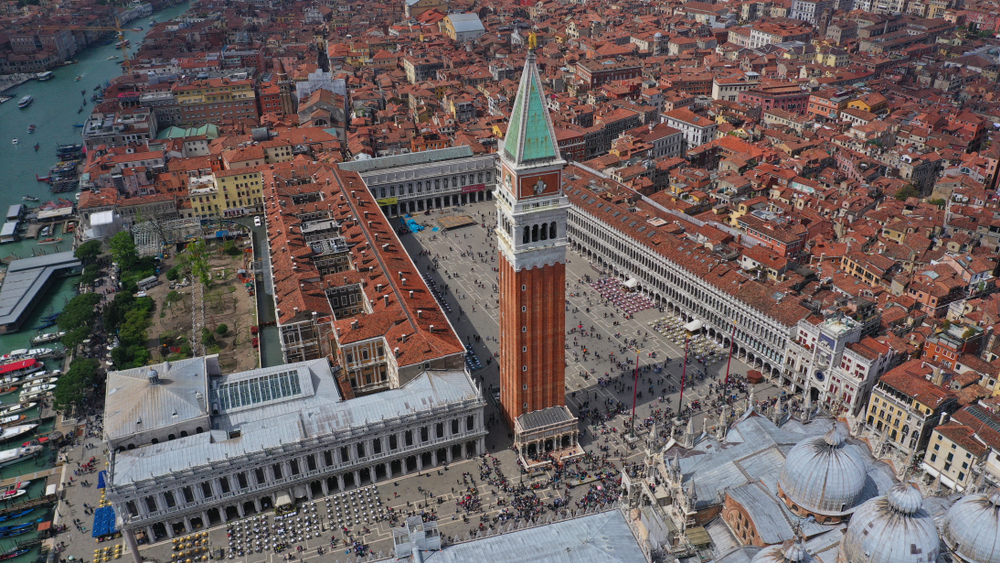
Piazza San Marco is the most celebrated square in Venice and has long been the city’s civic showcase. The open expanse, framed by ornate arcades and overlooked by St. Mark’s Basilica, contrasts with the winding alleys and canals that define the rest of Venice. The Campanile tower rises above the square, offering sweeping views of the city and lagoon. The Doge’s Palace, another highlight, symbolizes the power of the Venetian Republic during its golden age.
The piazza has hosted masked balls, state processions, and countless public celebrations. It has been described as Venice’s living room, where locals and visitors alike gather to experience the pulse of the city. Despite frequent flooding from the lagoon, the square continues to thrive as a vibrant civic center. The blend of history, architecture, and community activity makes it a symbol of Venice’s identity and resilience.
Red Square, Moscow
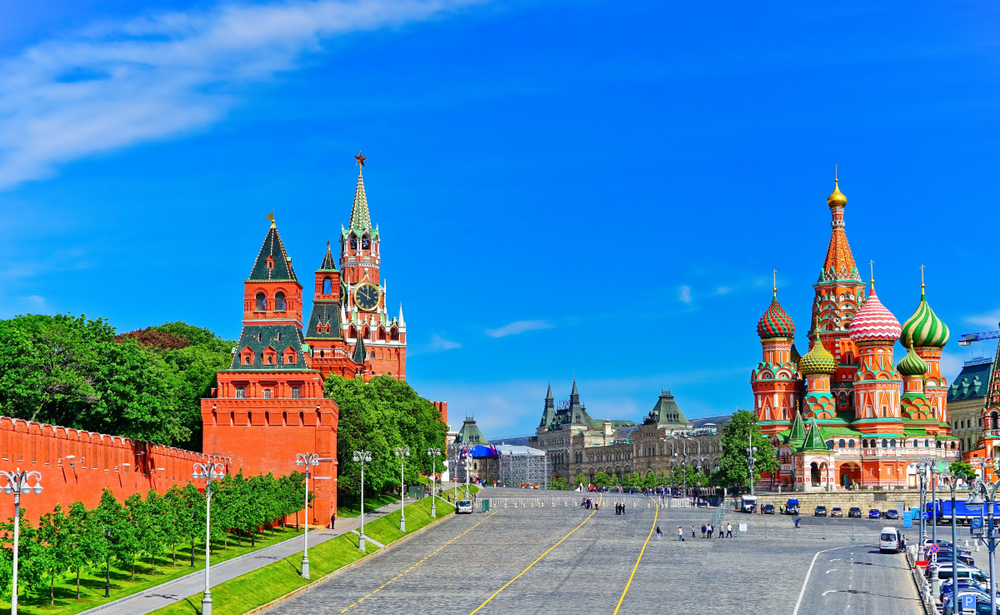
Red Square is perhaps the most iconic public space in Russia, instantly recognized by the colorful domes of St. Basil’s Cathedral at one end. The vast expanse stretches alongside the Kremlin walls, where rulers once addressed the people and where parades still take place today. In the past, it served as a bustling marketplace where traders from across the empire gathered to exchange goods. Its name, rooted in the Russian word for “beautiful,” reflects its symbolic importance.
The square has witnessed coronations, military reviews, and dramatic moments of Russian history. Lenin’s Mausoleum, located here, continues to draw visitors while reminding observers of the Soviet era. The mix of political, religious, and cultural landmarks around the square makes it a focal point of Moscow’s identity. Walking across its stones connects visitors to centuries of national history in a single space.
Piazza della Signoria, Florence
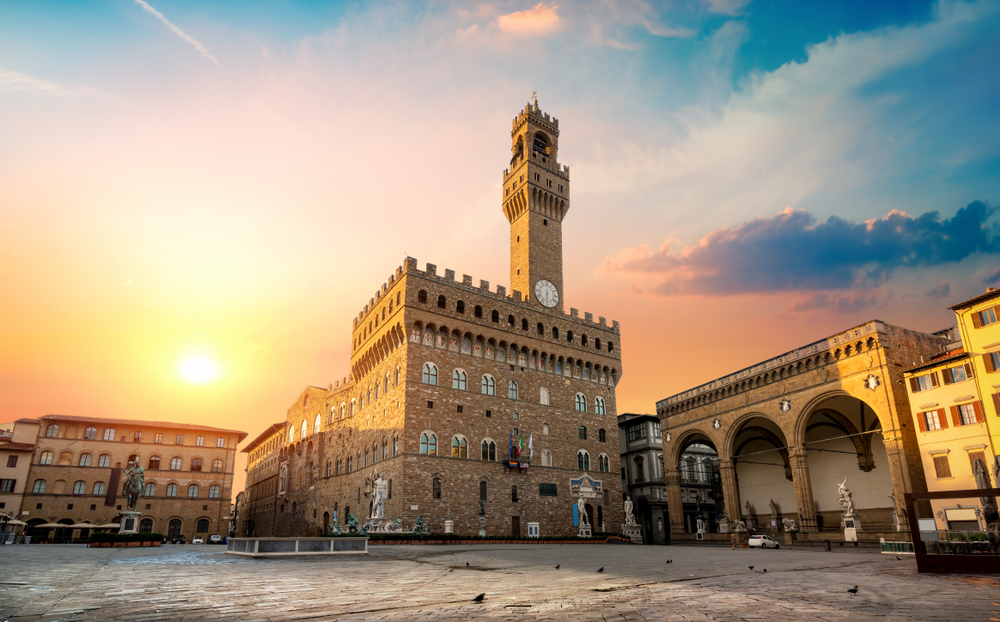
Piazza della Signoria is Florence’s civic center, rich with political and cultural symbolism. Dominated by the Palazzo Vecchio, it was once the headquarters of the Florentine Republic. The square is also an open-air museum, with sculptures such as a replica of Michelangelo’s David standing where the original was first unveiled. Other statues celebrate victories, mythological tales, and the power of the city-state.
The piazza was the stage for both triumph and tragedy. It was here that public executions and proclamations were carried out, shaping Florence’s turbulent history. Today, it remains a hub where art, politics, and community come together. Visitors and locals alike gather to admire the sculptures, enjoy cafés, and reflect on Florence’s role in the Renaissance.
Plaza Mayor, Madrid
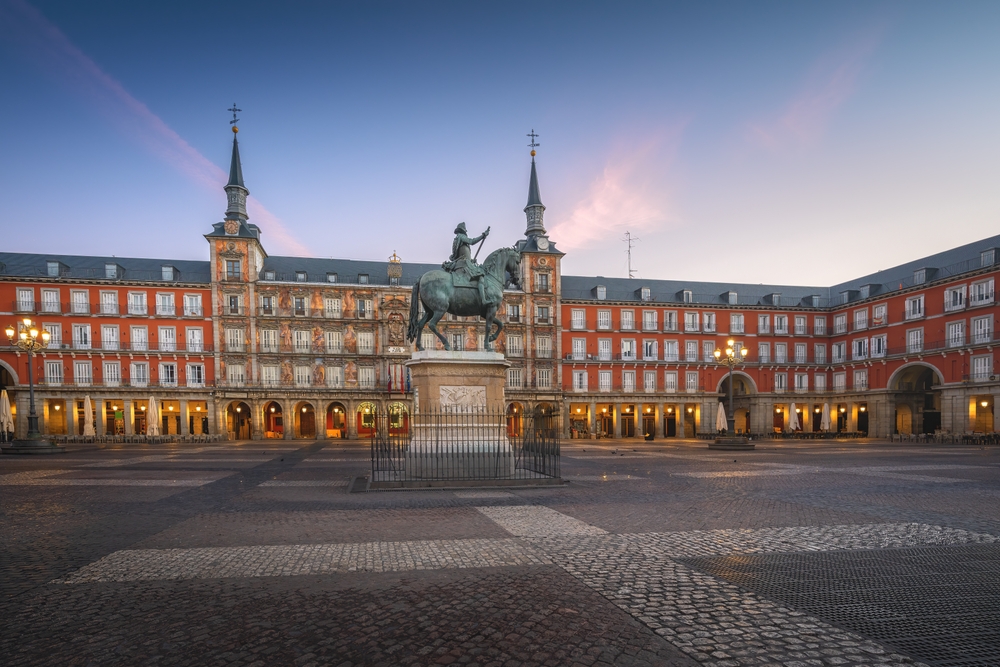
Plaza Mayor in Madrid is a striking square with red-bricked facades and uniform balconies surrounding its rectangular shape. Built during the reign of Philip III, whose statue dominates the center, it became the heart of civic and social life in the Spanish capital. The architectural harmony of the arcades and buildings gives the square a sense of unity that reflects Madrid’s grandeur.
Throughout its history, it has hosted markets, bullfights, festivals, and even trials by the Inquisition. Today, it is a lively meeting place where restaurants and shops line the arcades. Locals stroll across its open space, and seasonal events like the Christmas market keep traditions alive. The square continues to embody the vibrant spirit of Madrid.
Piazza del Campo, Siena
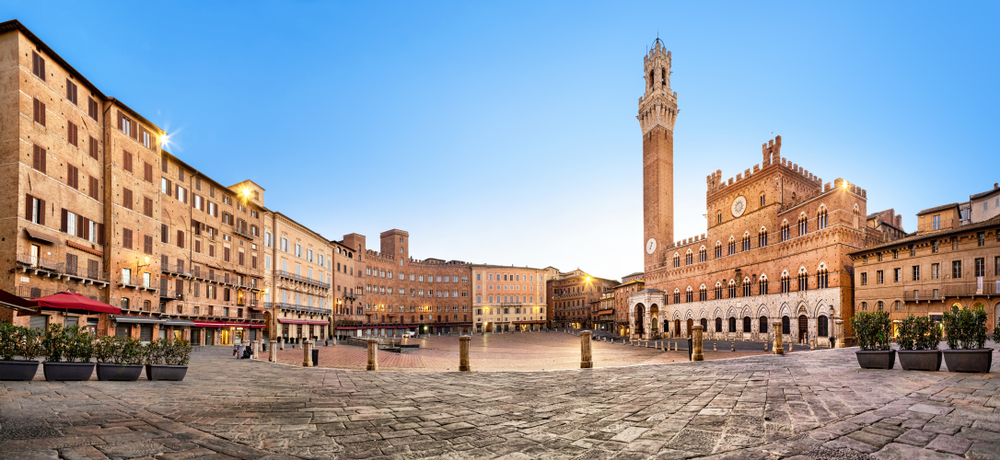
Piazza del Campo in Siena is one of Italy’s most unique town squares, shaped like a wide shell with sloping sides that naturally draw people inward. The Palazzo Pubblico and its tall Torre del Mangia tower stand proudly at one end, reinforcing the square’s civic importance. The harmonious layout, paved with red brick and divided into nine sections, reflects the medieval government that once ruled the city.
The square is world-famous for the Palio, a thrilling horse race held twice a year where rival districts compete with passionate intensity. Beyond the spectacle, Piazza del Campo remains a space where people gather for festivals, public meetings, and daily relaxation. Its blend of architectural harmony and cultural tradition makes it the soul of Siena.
Grand Place, Brussels
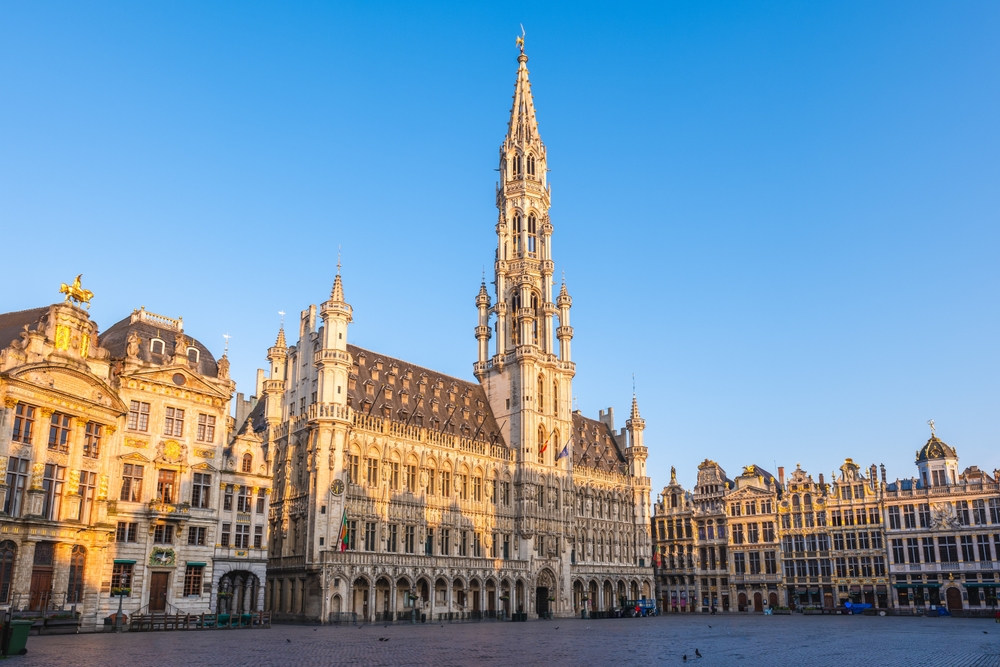
Grand Place is the jewel of Brussels, renowned for its lavish guildhalls and the towering Town Hall. Each building is adorned with ornate decorations, reflecting the wealth and pride of the city’s merchants and craftsmen. The square has survived wars and reconstruction, always emerging as a symbol of the city’s endurance.
Events such as flower carpets, markets, and festivals continue to draw crowds from around the world. Once a commercial hub, it now serves as both a tourist attraction and a gathering place for locals. The blend of Gothic and Baroque styles creates a rich visual impression, making it one of the most admired squares in Europe.
Trafalgar Square, London
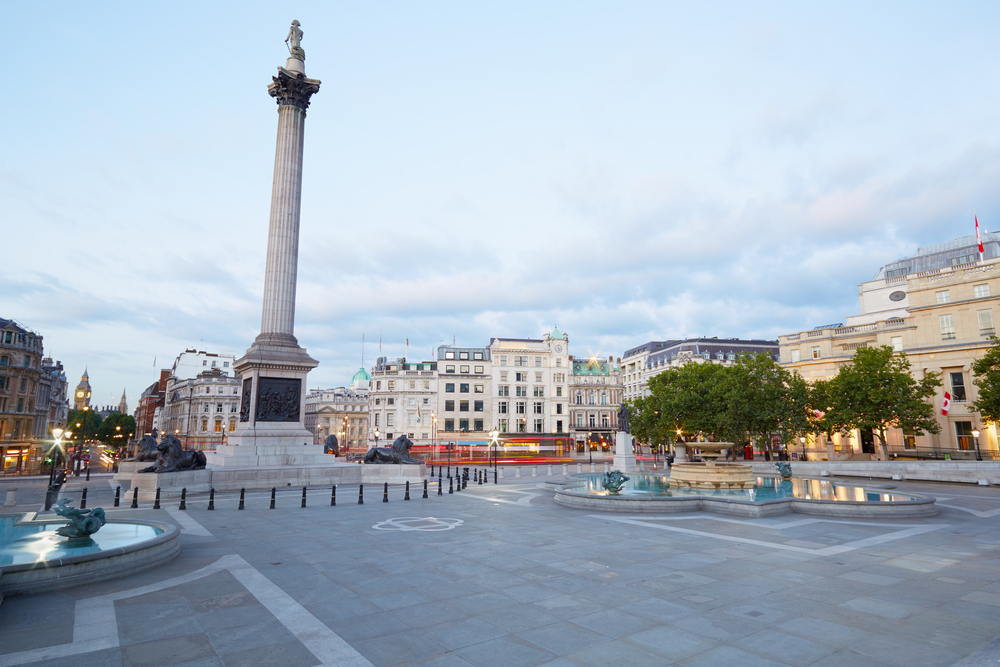
Trafalgar Square is one of London’s most famous public spaces, named in honor of Admiral Nelson’s naval victory. The towering Nelson’s Column stands at its center, flanked by statues and fountains that add to the lively setting. Surrounding the square are landmarks such as the National Gallery, reinforcing its cultural importance.
It has long been the site of political rallies, celebrations, and public demonstrations. From New Year’s Eve gatherings to sporting celebrations, it continues to reflect the life of the city. Pigeons once filled the square, but now people occupy the space to enjoy both everyday moments and major events. Trafalgar Square remains central to London’s identity as a civic gathering point.
Piazza Navona, Rome
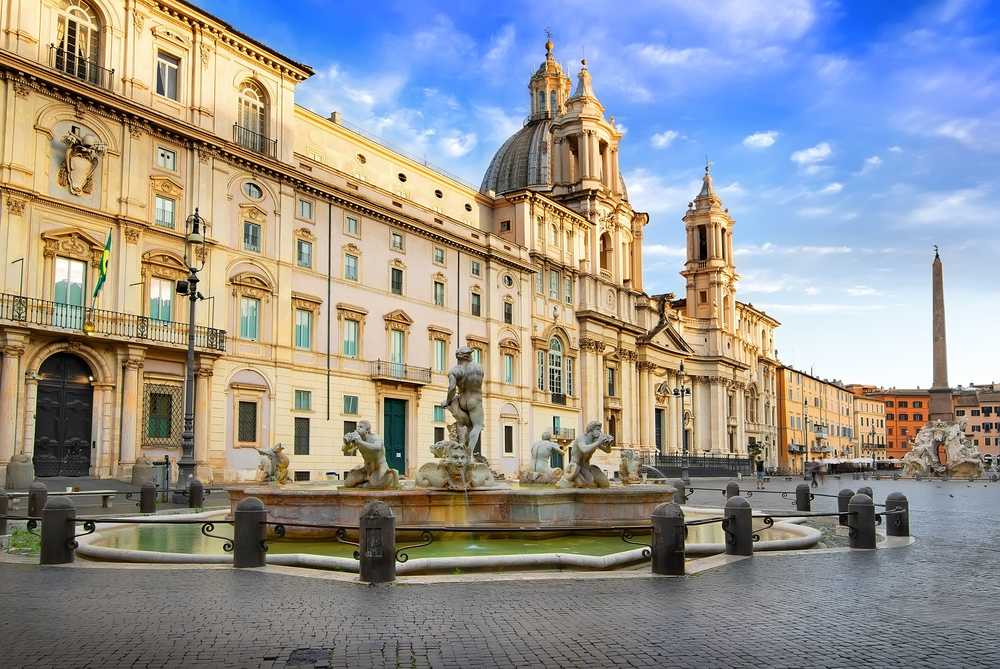
Piazza Navona is one of Rome’s most elegant squares, built on the site of an ancient stadium. Its elongated shape still reflects the footprint of the athletic arena that once stood there. At its center stands Bernini’s Fountain of the Four Rivers, one of the most celebrated works of Baroque art in the city.
Artists, musicians, and street performers fill the square with life, while cafés and restaurants spill onto the cobblestones. Historically, it hosted festivals and even mock naval battles when the area was flooded for entertainment. Today, it remains a place where Romans and travelers gather to admire art, architecture, and community in equal measure.
Rynek Główny, Kraków
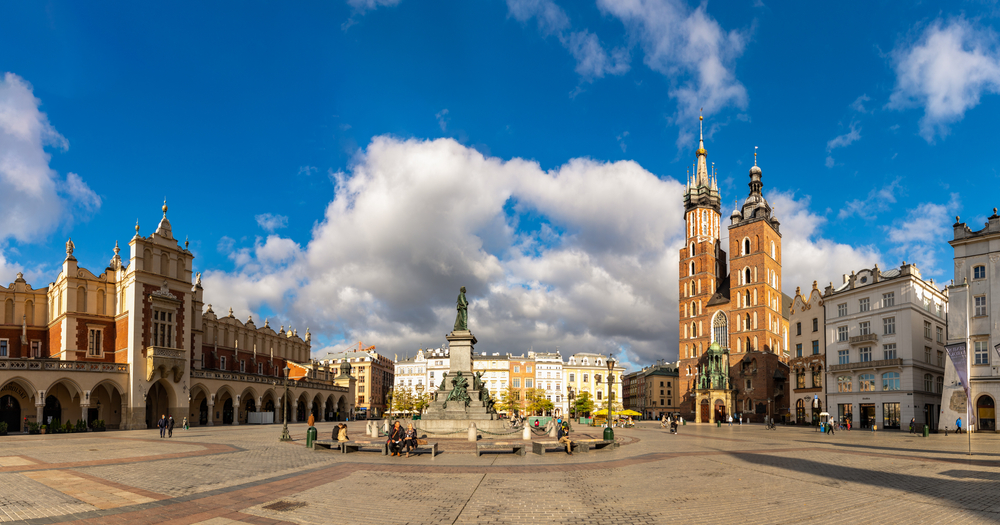
Rynek Główny is the largest medieval square in Europe, located in the heart of Kraków. Surrounded by historic townhouses, palaces, and churches, it reflects the grandeur of Poland’s past. At its center stands the Cloth Hall, a Renaissance trading hall that once served as a hub of international commerce.
The square has been a site of markets, royal processions, and public celebrations for centuries. Today, it hosts festivals, concerts, and vibrant cafés that make it a lively destination. Horse-drawn carriages circle the square, adding to its charm. Rynek Główny continues to define Kraków as both a historic treasure and a thriving civic space.
Dam Square, Amsterdam
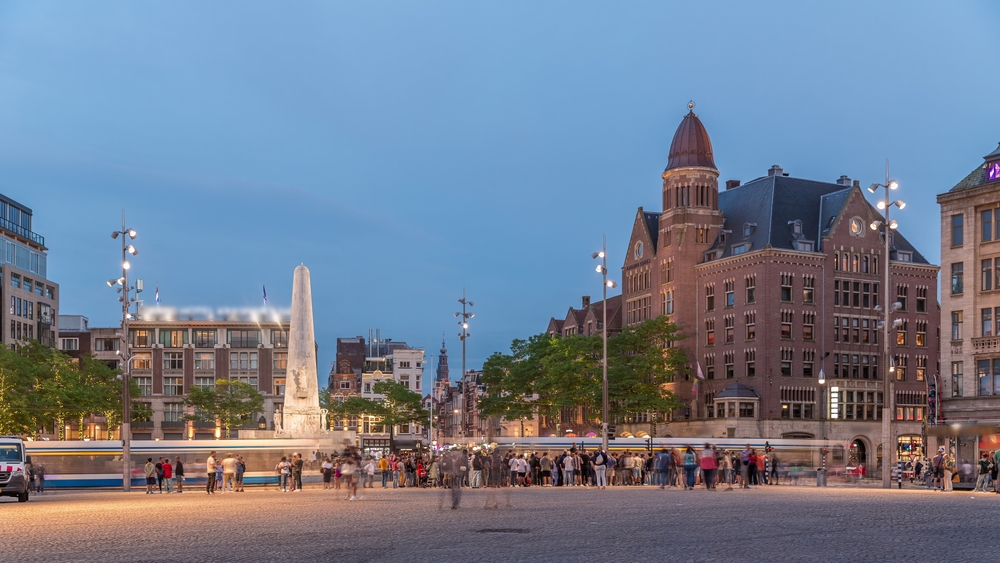
Dam Square sits at the historic center of Amsterdam and has been a focal point of city life since the thirteenth century. Its name comes from the original dam built on the Amstel River, which gave rise to the city itself. Today, the Royal Palace dominates the square, joined by the National Monument that honors those lost during the Second World War. The mix of civic, royal, and memorial functions makes it a place of both celebration and reflection.
Over the years, Dam Square has been home to markets, festivals, and major public gatherings. Street performers, vendors, and tourists mingle in the open space, keeping the square alive with energy. From national ceremonies to casual strolls, it continues to embody the civic spirit of Amsterdam. Its ability to adapt to both solemn and festive occasions has secured its role as the heart of the city.
Plaza de Mayo, Buenos Aires
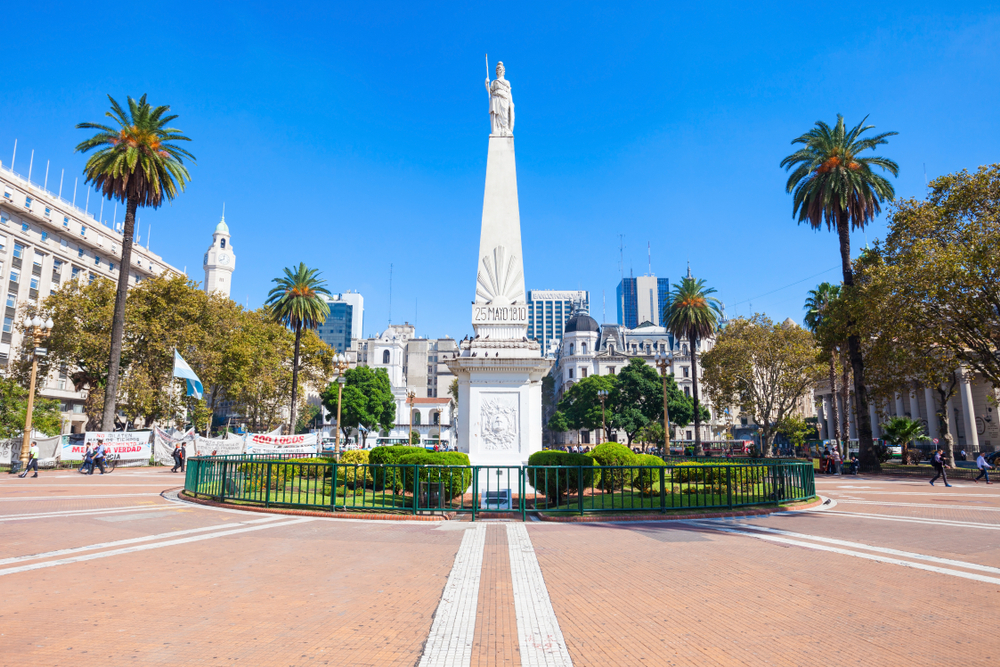
Plaza de Mayo is the political and historical center of Buenos Aires, framed by significant buildings like the Casa Rosada, the Metropolitan Cathedral, and the Cabildo. It has been the setting for Argentina’s most pivotal moments, from independence demonstrations to modern-day protests. Statues and memorials in the square honor the country’s struggles and triumphs.
This space remains a powerful symbol of civic expression. The Mothers of Plaza de Mayo, who gathered weekly to demand answers about their missing children during the dictatorship, turned the square into a beacon of resilience. At the same time, it serves as a communal gathering place for celebrations and daily activities. Plaza de Mayo reflects the soul of Buenos Aires as a city that values both memory and community life.
Stortorget, Stockholm
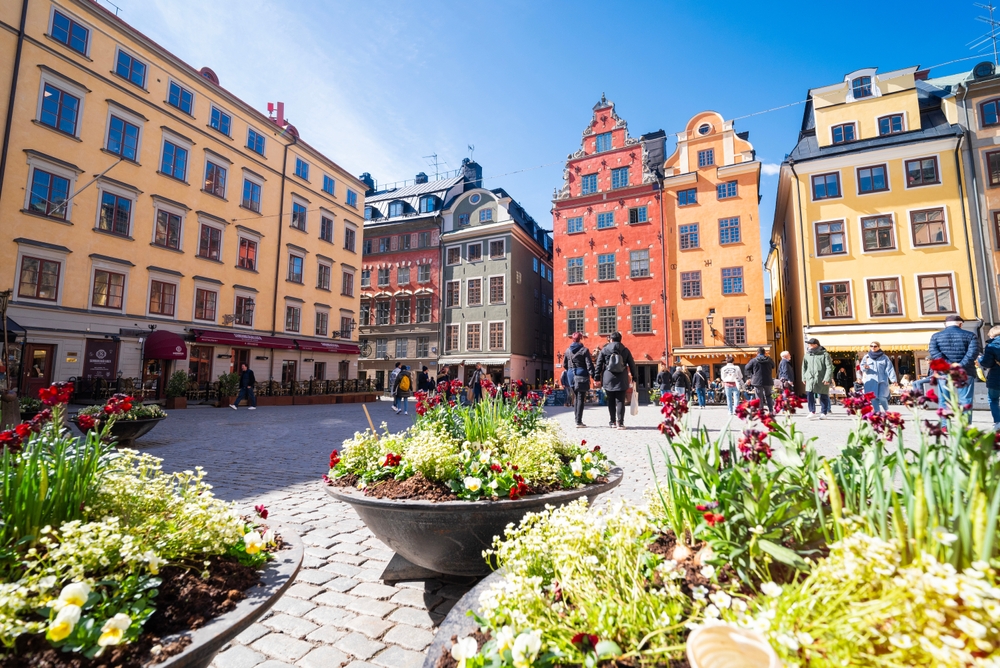
Stortorget is Stockholm’s oldest square, located in the heart of Gamla Stan, the city’s Old Town. Surrounded by colorful merchant houses, it reflects the trade and prosperity that shaped Stockholm’s early years. The square’s cobblestones and fountain create a picturesque setting that feels timeless.
The square has also been marked by dramatic history, including the Stockholm Bloodbath of 1520, when Danish forces executed Swedish nobles here. Despite its dark chapter, Stortorget evolved into a place of daily life, markets, and festivals. Today, it is known for its Christmas market, drawing visitors from around the world. Its beauty and historical depth make it one of Stockholm’s defining spaces.
Piazza Maggiore, Bologna
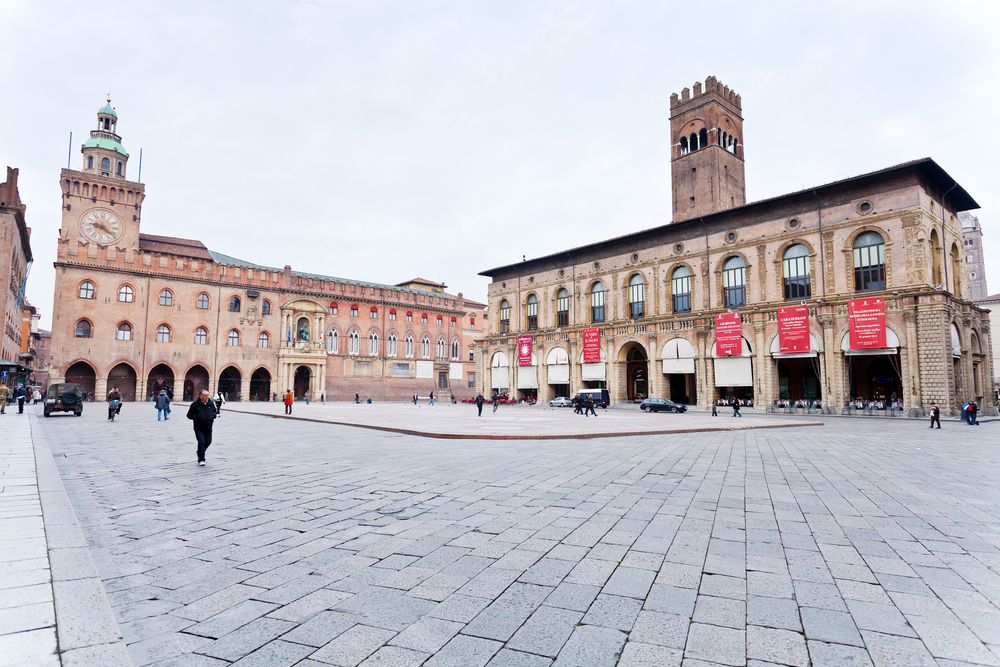
Piazza Maggiore is the civic heart of Bologna, framed by important medieval buildings such as the Basilica of San Petronio, the Palazzo dei Notai, and the Palazzo d’Accursio. The square’s broad open space has always invited gatherings, from political speeches to local festivals. Its architecture reflects the wealth and independence of the city during the Middle Ages.
Over centuries, it has remained a place where Bolognese people come together. Summer events, concerts, and film screenings continue to draw crowds into its historic setting. The square is equally a site for casual strolls and quiet admiration of its monumental buildings. Piazza Maggiore captures the essence of Bologna’s role as both a historic and cultural hub.
Old Town Market Square, Warsaw
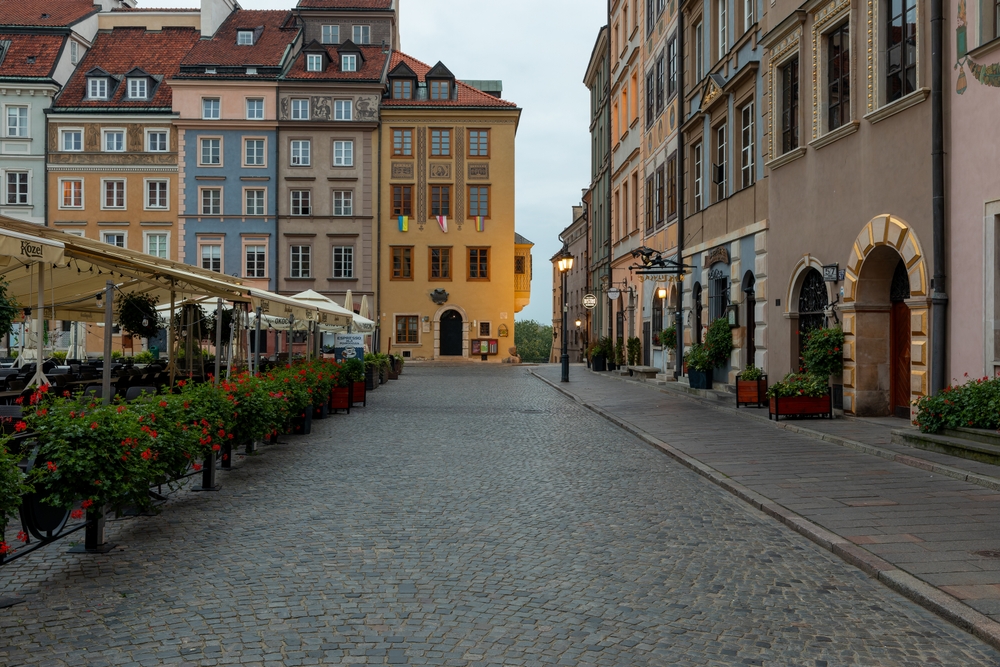
Warsaw’s Old Town Market Square is a colorful and historic space rebuilt after the devastation of the Second World War. Lined with pastel-toned townhouses reconstructed with incredible attention to detail, it is a symbol of the city’s resilience. At its center stands the statue of the Warsaw Mermaid, the emblem of the city.
The square originally served as a hub for merchants, festivals, and local gatherings. Today, it hosts art displays, cultural performances, and seasonal markets that keep the tradition of community alive. Despite its tragic destruction in wartime, its reconstruction turned it into a living reminder of national pride. It stands as both a historic gem and a vibrant community space for modern Warsaw.
This article originally appeared on Avocadu.
